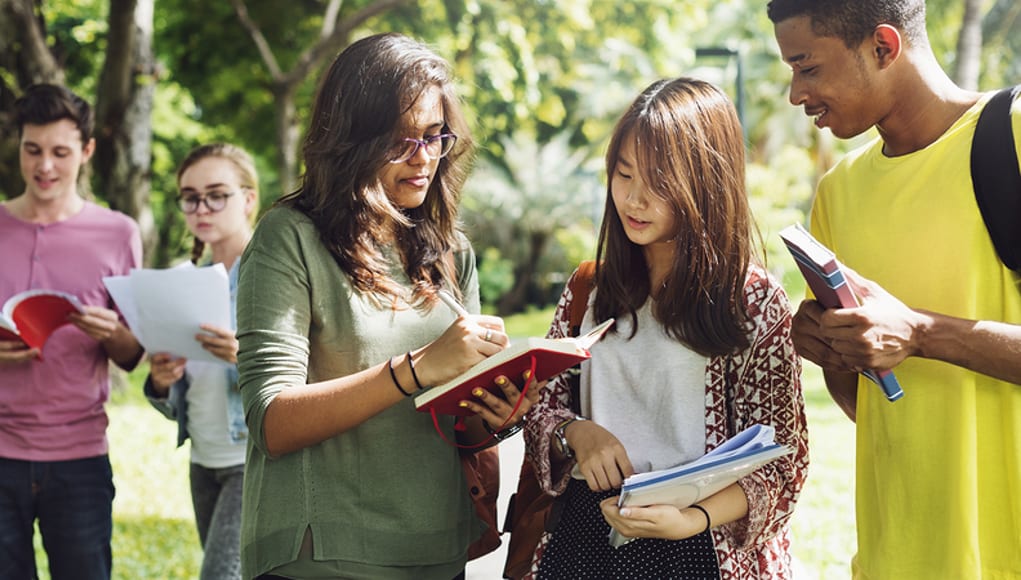Integrating Cognitive, Social and Personal Competencies

Educators have come increasingly to recognize that student success depends on more than content knowledge and skills alone. After all, learning is unavoidably fraught with setbacks and discouragements, so personal traits, like “grit” and “growth mindset,” are needed if students are to keep at it. Likewise, the pursuit of an education doesn’t take place in isolation but in concert with others–so social skills, such the ability to cooperate in a group setting, are vital for success as well–even more so when we consider what the future of the job market will look like.
Even as they gain emphasis, however, personal and social skills typically get defined and taught separately from conventional schoolwork. SEL programs, for example, tend to teach and assess non-cognitive skills quite apart from the math or reading lessons they’re intended to support. As actually applied, however, authentic academic skills are a combination of cognitive, social and personal competencies. Indeed, the goal behind inserting non-cognitive skills instruction into the curriculum is to complement and shore up cognitive performance, not to introduce isolated new constructs.
As we move deeper into the 21st century, cognitive, social and personal skills will need to be integrated to ensure students’ success. The decentralized, interconnected, collaborative contexts of 21st-century work and education demand that these skills be taught as complementary, interdependent, even synergistic.
What does an integrated approach look like? My organization, BetterRhetor, has been exploring this idea with a six-week module for high school and college students, organized around the production of a research-supported persuasive essay. In our module, social and personal competencies are part of the overall competencies framework, built into writing, reading, and research instruction and assessment.
Some of the lessons we’ve learned for successfully integrating cognitive, social and personal competencies include:
1) Define the classroom as an academic community. Social skills can’t be practiced in the abstract; they need an environment in which students are not merely in physical proximity to one another but in true relationship with one another. In an academic community, students bear responsibility for their peers and for the aims of the group as a whole. In meeting their community responsibilities, students learn and practice social skills necessary for academic success:
- They understand that academic communities have their own behavioral norms and expectations; success requires learning and conforming to them;
- They understand that they are in continuous conversation with one another; their work is available for review and response by their classmates, so must be constructive in tone and content;
- They understand that they are there to learn from one another’s successes and failures; a lack of effort on anyone’s part diminishes everyone’s opportunity to learn.
2) Intentionally designed projects. Design projects (or, better yet, set your students up to design their own projects) that will teach and elicit social and personal competencies alongside cognitive skills and knowledge. That means designing extended projects that require student-to-student interaction and sustained individual effort. Some vital social and personal skills reveal themselves only over time.
As an example of integration, our College-Ready Writing Module emphasizes peer review, with students providing feedback on the drafts of 10 to 15 of their fellow students. Peer review is solid writing pedagogy, of course, but it also provides an opportunity to emphasize important social competencies. The ability to give socially and intellectually constructive feedback, and to accept critiques of one’s own work by others, are transferable competencies that can be learned and practiced in the course of learning to write.
3) Assess cognitive, social, and personal competencies together, as integrated dimensions of academic performance. Social and personal competencies can be directly folded into overall performance measures. For example:
- The quality and extent of comments one student offers another is a measure of their willingness to put forth effort for the benefit of others;
- The tone of a student’s contributions to the group is a measure of their ability to meet the behavioral expectations of the community;
- The focus of their exchanges — whether relevant and on-task, or digressive and self-indulgent — is an indication of self-awareness;
- The number of times a student revises her work or seeks help from his instructor is an indication of personal persistence;
- Self-evaluation is a measure of students’ ability to see their own strengths and weaknesses.
The behavioral competencies needed for academic success can be improved and reinforced through assessment, but only if they are first baked in as integrated and integral parts of academic performance.
The dispositions and behaviors necessary for academic success are not constructs separate from instructional content, but are integral to it. Extended projects conducted within classrooms that have begun to feel to students like “academic communities” present opportunities to teach, elicit, and assess vital cognitive and non-cognitive competencies together, as integrated components of authentic academic performance.
For more, see:
- Embedding SEL Across the Curriculum
- Developing Leadership Qualities in the Classroom Through SEL
- Preparing Students for Future Success with PBL and SEL
Stay in-the-know with all things EdTech and innovations in learning by signing up to receive the weekly Smart Update.








0 Comments
Leave a Comment
Your email address will not be published. All fields are required.